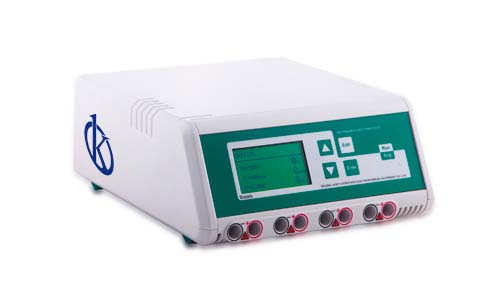A power supply is a device that provides electrical power to operate other electronic components. These power supplies are made of basic electronic devices such as diodes, resistors and capacitors and fall into two broad categories: full and non-full waveforms. A full wave produces a more circular and evenly regulated output signal. Non-full power supplies are more appropriate for power systems with improved voltage, such as those found in high-performance applications.
Since electronic components can be subjected to high voltages, and manufacturers generally offer customizable inductive circuit features to limit the output voltage and ensure the safety of connected devices. At Kalstein we have the ideal power supply, which has constant voltage, constant current, constant power, malfunction, intelligent fault warning functions
Automatic detection of no load, overload, short circuit, rapid resistance change, ground leakage and system overheating.
Key Considerations
A lab requires state-of-the-art electronic equipment for professionals to experience safely. So one of the most important equipment is the power supply, so choosing the right one is a critical choice. However, this is not so easy as there are a wide variety of options available in the market. It is therefore important to take into account a number of considerations in this regard.
First, the lab must have electrical safety. The power supply must comply with established electrical safety codes in all countries. All equipment and devices must strictly comply with the standards of strength, isolated safety and dielectric. It is important to select a power supply that provides the secure connection of the electrical safety network in the laboratory.
Secondly, the design and construction of the power supply must be of first quality, to ensure the accuracy of all equipment. It would be mandatory for the manufacturer to supply robust components. This would prevent premature equipment failure while in use in the laboratory.
Third, consider the power supply’s capacity compared to the amount of equipment that will exist in the lab. For best results, it is recommended to select the total power or higher power than the source would initially need. This will allow expansion without removing power from other computers.
Finally, for a low operating cost, the current consumers of the laboratory power supply would be significantly lower than the average listed on the label. This is known as electrical efficiency and is a critical factor when choosing a power source for a laboratory.
Power Supply Efficiency
A higher efficiency source will convert more energy into a useful output signal, helping to reduce power consumption and operating costs. Some low-cost sources tend to have relatively low efficiency.
It is important to consider the performance of this equipment in terms of the specific amount of current that the power supply can deliver to a circuit without failing. The current output value should be at least twice the average maximum current value required for devices connected to the circuit.
Finally, consider the form factor of the power supply. The form factor refers to the mechanical strength of the unit, which must be adequate to withstand the load demanded by the devices connected to the circuit and also to allow the assembly and management of the power cables. Electrical requirements such as capacitance, insulation and operating voltage should also be taken into account.
Power Supply Brand Kalstein
At Kalstein we have the best lines in equipment, able to meet all the needs of our users, also, as manufacturers we offer you the ideal equipment belonging to the YR series. We have the ideal Power Supplies, which have a timer range 1min~99hr, 59min LCD monitor with backlight and four connector sets output jacks. Among other features you can view HERE We also have the best advice, so that your purchase is the ideal and at excellent prices. For more information, visit our website at HERE




